The masterworks of sculptor Sergey Eylanbekov for the Gen. Dwight David Eisenhower Memorial are another step closer to completion with the announcement of the official dedication ceremony to be held on 8 May 2020 – the 75th anniversary of VE Day – on the National Mall in Washington D.C.
Architect Frank Gehry’s design for the Eisenhower Memorial was developed in collaboration with a creative team of artists and engineers. The Eisenhower Memorial Commission, created by Congress, is overseeing creation of the project.
Eylanbekov, the United States Sports Academy’s 2004 Sport Artist of the Year, was selected to design the sculptures that will commemorate Eisenhower as Supreme Commander of the Allied Expeditionary Force in World War II and as 34th President of the United States. His sculptures will be placed at the core of the memorial in the nation’s capital. Statues will be executed in bronze and complemented by bas reliefs carved in stone.
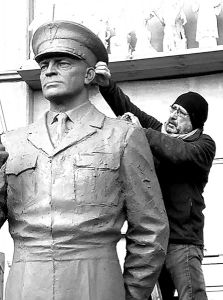
Sculptor Sergey Eylanbekov working on clay model of Gen. Dwight David Eisenhower. Image and sculpture courtesy of Sergey Eylanbekov
One composition of Eylanbekov’s bronze sculptures will represent Eisenhower as the 34th President of the United States, flanked by civilian and military advisers. Another composition of bronzes will represent Eisenhower as Supreme Allied Commander during World War II, with the 101st Airborne Division before their jump into France. Monumental bas reliefs by Eylanbekov will also be a part of the sculptural composition.
The memorial will be located within a four-acre urban park on Independence Avenue, across from the Smithsonian’s National Air and Space Museum and adjacent to the U.S. Department of Education.
“Being involved in the creation of the Dwight. D. Eisenhower National Memorial and creating sculptures for the memorial is a great honor to me,” Eylanbekov said. “I can’t overstate the importance of this project in my professional and personal life.
“The sculptures in this project are created for the public, for the people to observe them, to think and respond emotionally. That is where the visual power of art is most evident. I hope the bronze images will be strong enough to impress the visitors to the memorial and live in their memories.
“From the artistic standpoint, in the sculptural composition and in each bronze figure I am trying to express the enormous tension of the moment by using all of my skills as a sculptor. There is no obvious movement in the sculptures. There is only internal pressure and energy expressed through the sculptural form of the faces, hands, and poses of men who are about to go into battle.
“I think of this sculptural group of six soldiers as ‘the wall’. They are all different, they have different feelings of what is about to happen, and at the same time they are absolutely united by the event. Each one of them carries the weight of the future of the free world on their shoulders. Many of them are not going to survive the battle. They and their leader understand both concepts. It is a very complex psychological state for the soldiers as well as for their leader.
“My goal as a sculptor is to translate in bronze the enormous importance of the moment as well as the eternal concept of an ultimate sacrifice for the most important of reasons.
“Historically the fight for freedom has always demanded sacrifice. This relates in different measures to societies, countries as well as to individuals.”
Eylanbekov has had a close relationship with the Academy for many years and was selected as Sport Artist of the Year in 2004. Eylanbekov’s bronze torsos entitled “Venus and Mars” are featured at the entrance to the Academy’s American Sport Art Museum & Archives (ASAMA). The artist crafted the sculptures in recognition of the marriage of Prince Albert II and Princess Charlene of the Principality of Monaco, who are both Olympians.



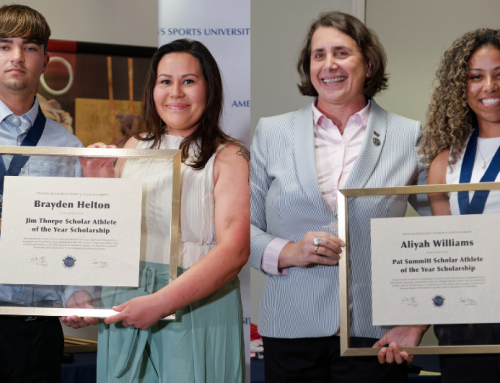
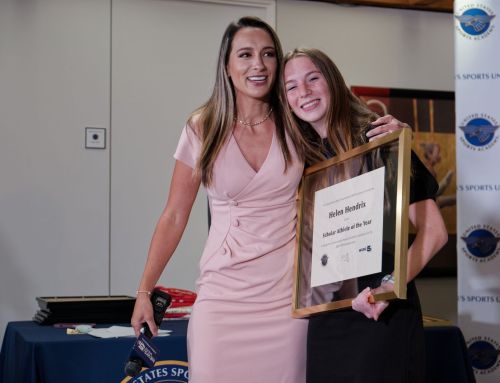
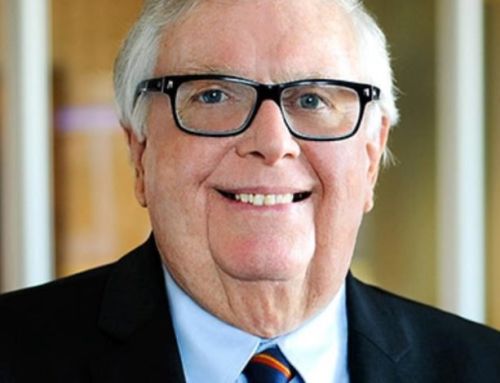
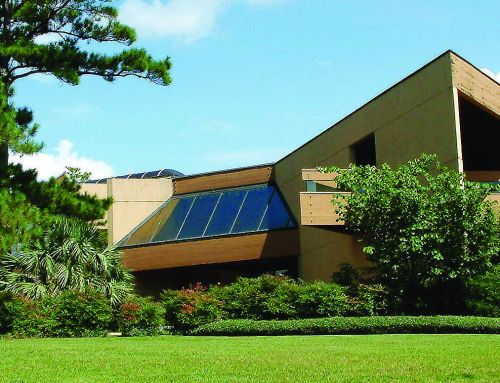
Fantastic to see a graduate having a lasting impact!!…..Great job!